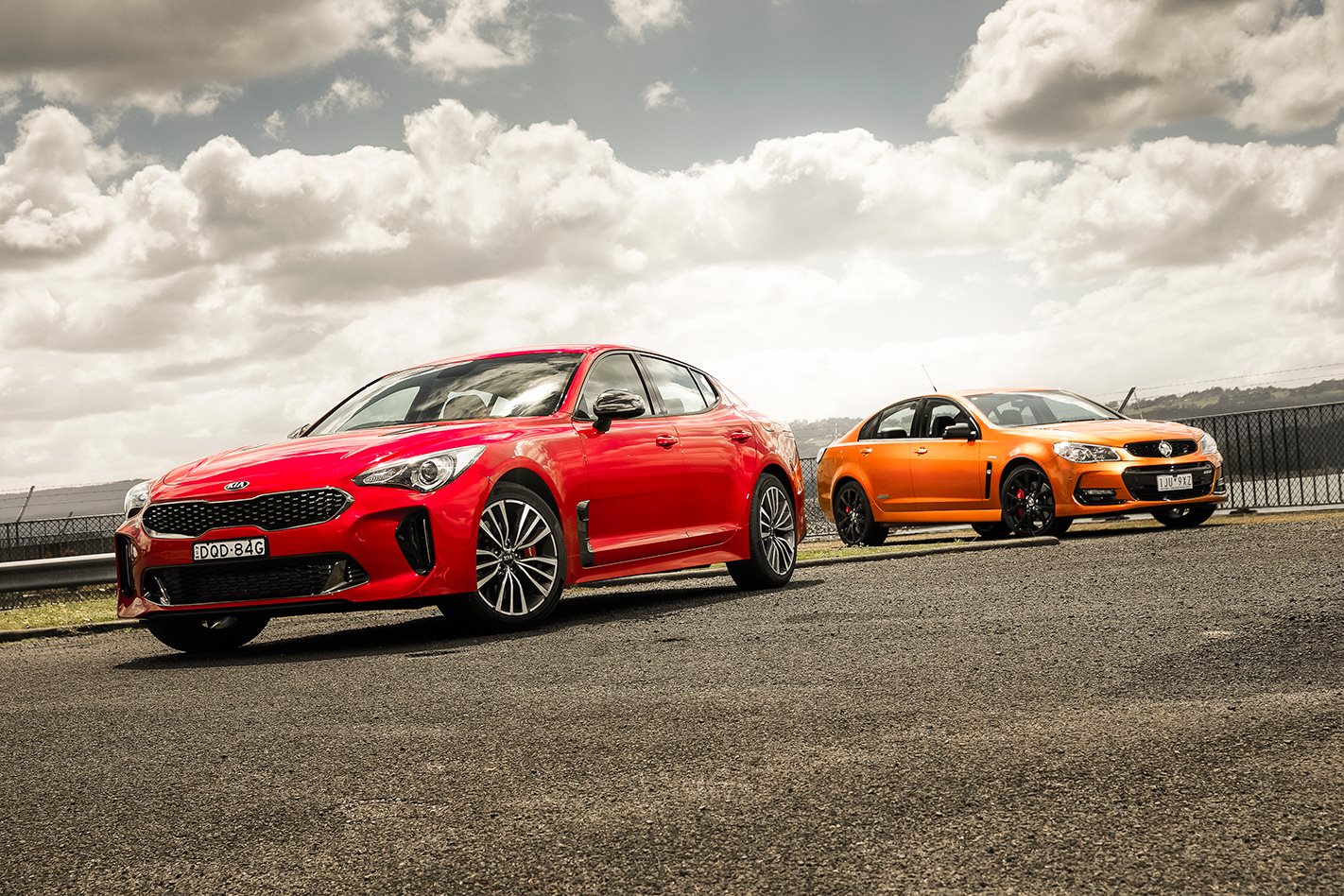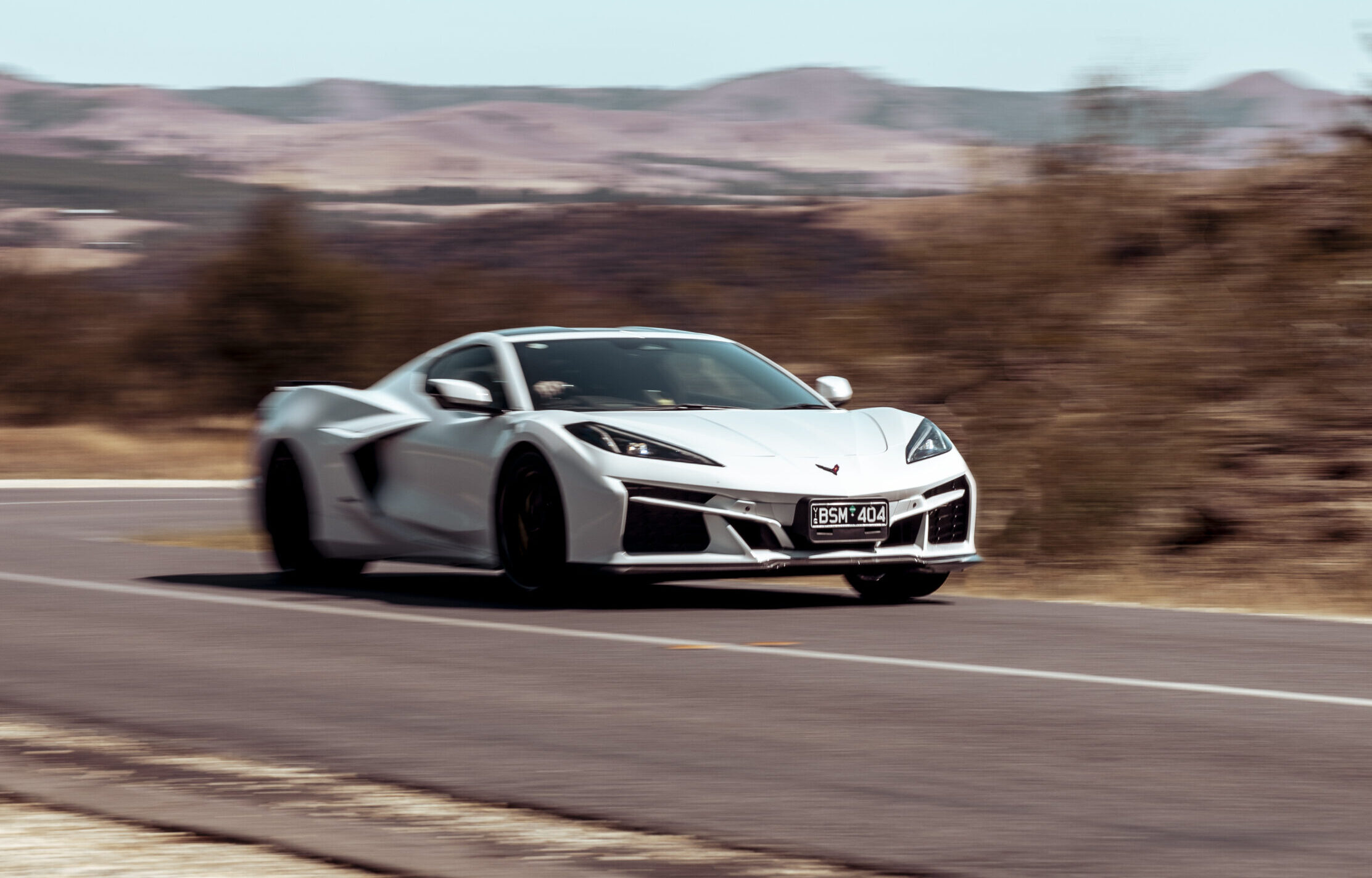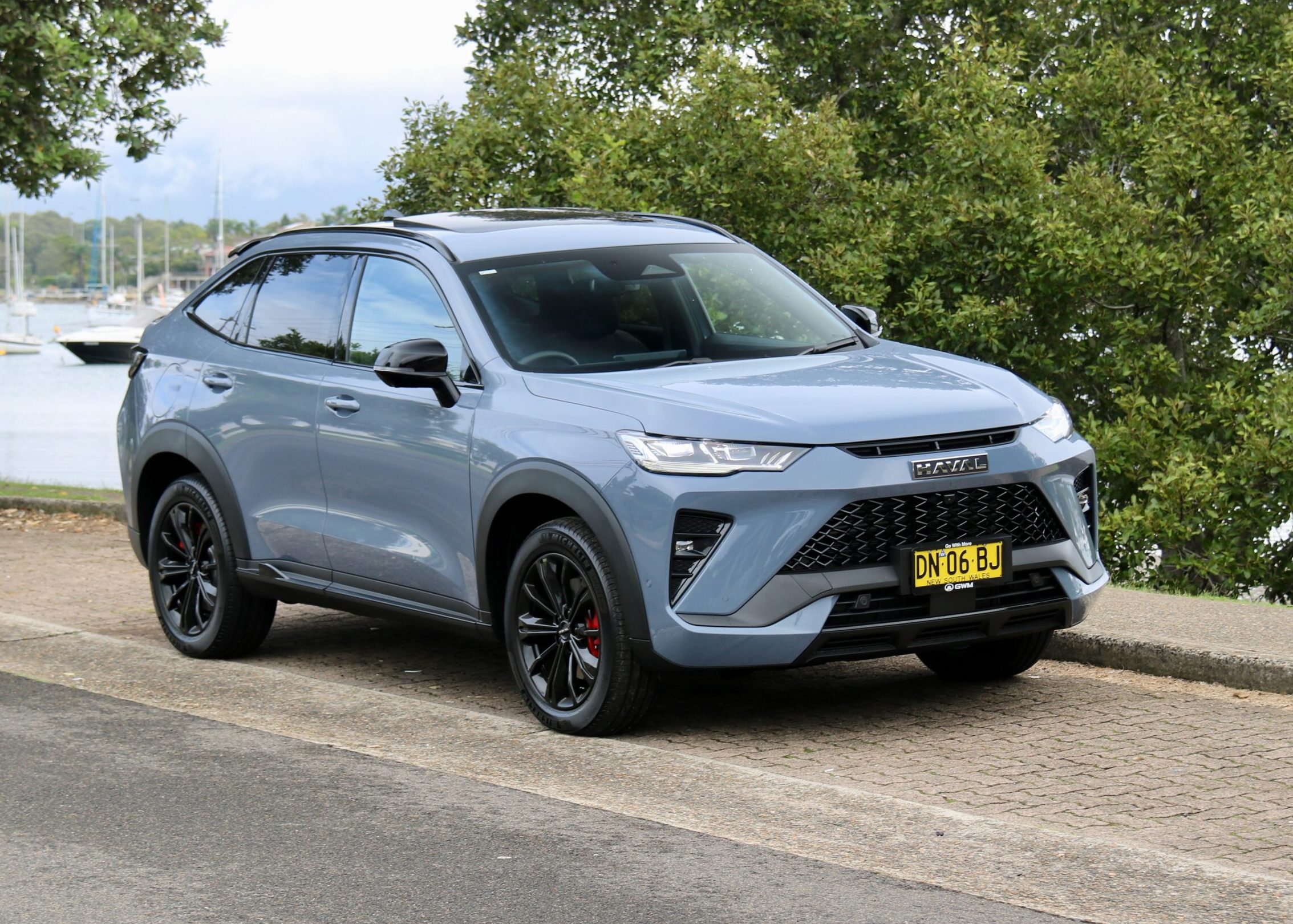Timing, as they say, is every damn thing.
The best joke in the world, told by a dimwit, will still fall flat. But even the worst dad joke, when delivered by a teller with a sharp sense of timing (so, probably not your dad, then) will slay ’em in the aisles. Or at the bar, usually.
And clearly, as big, rear-drive, big-engined Aussie sedans have now finally disappeared up the Federal Government’s mud-button (thanks for nothing, Tone) Kia’s timing in unleashing the big, rear-drive, big-engined Stinger sedan is the punchline to end them all.
The suspicion is that the Kia has the potential to pick up where the Falcon and Commodore left off so abruptly and permanently; that it could be the solution to those of us who don’t want an SUV or a dual-cab ute. Fair hypotheses, both of them.
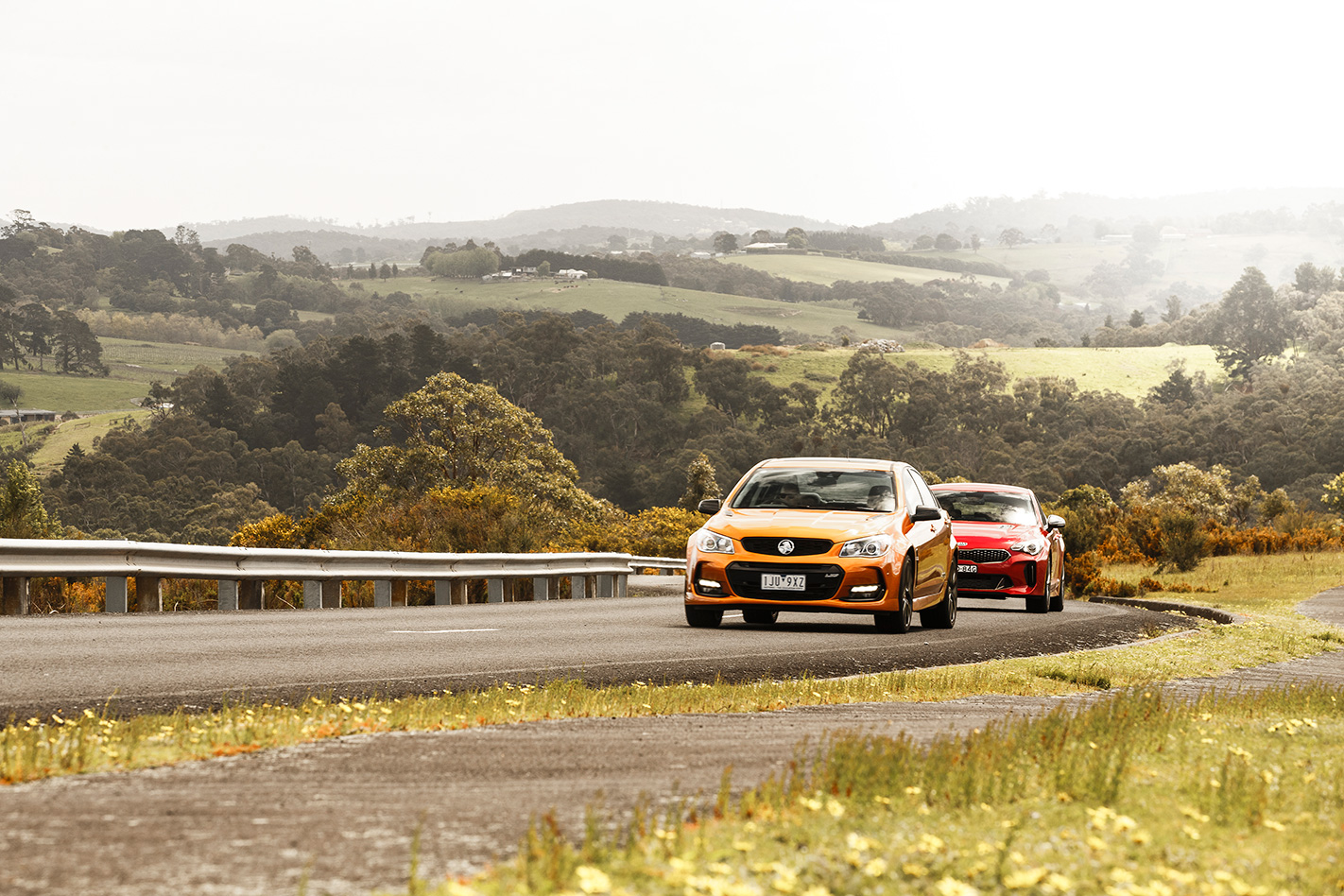
Or is it just a dad joke, well told – a lucky shot thanks to that sublime timing? It’s one hell of a benchmark to attempt to live up to, but for the purpose of this experiment, we managed to find a Commodore SS-V Redline ($57,190 to you, sir) lurking down the back of Holden’s test fleet.
And in the interests of science, the idea is to back-to-back the Redline with the entry-level V6 Stinger, the $48,990 V6 330S, shake well and see what happens. The first thing you figure out is just how damn big the Kia really is.
While the Aussie Commodore still shades it by every dimension, it’s not by much, and with five doors instead of the Holden’s four, the Stinger should work pretty well for families. But there are a couple of niggles imposed by that swoopy silhouette.
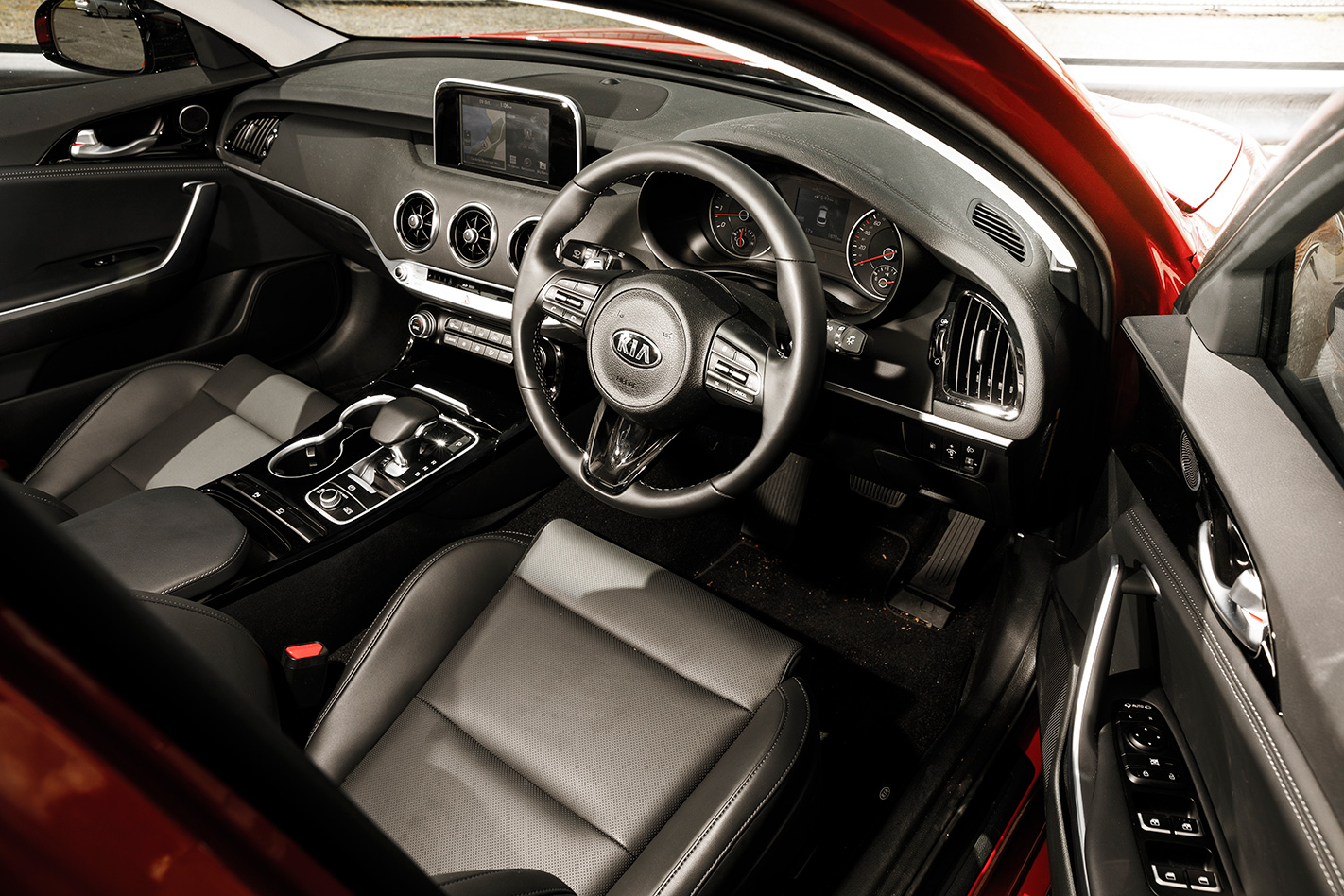
The rising waistline means the side-rear glass is very shallow (not good for the really young ones) and the structure involved in making the rear window open and close means the window itself is small and slanted. So it’s tough to see behind you. Some are not going to like parallel parking the Stinger.
The Holden’s rear seat is also a better thing to perch on, although leg room and shoulder room is closer to the Kia’s than you might think. But you also sit higher in the SS-V, there’s more under-thigh support and way more glass area. On the downside, the Holden is noisier in the back and lets a few more bumps in.
Up front, the story is similar. While the VFII Holden is a nice place to sit, the Kia isn’t bad to look at either with Benz-esque turbine air-vents and speaker grilles and an intuitive touchscreen that cleans up the cabin generally.
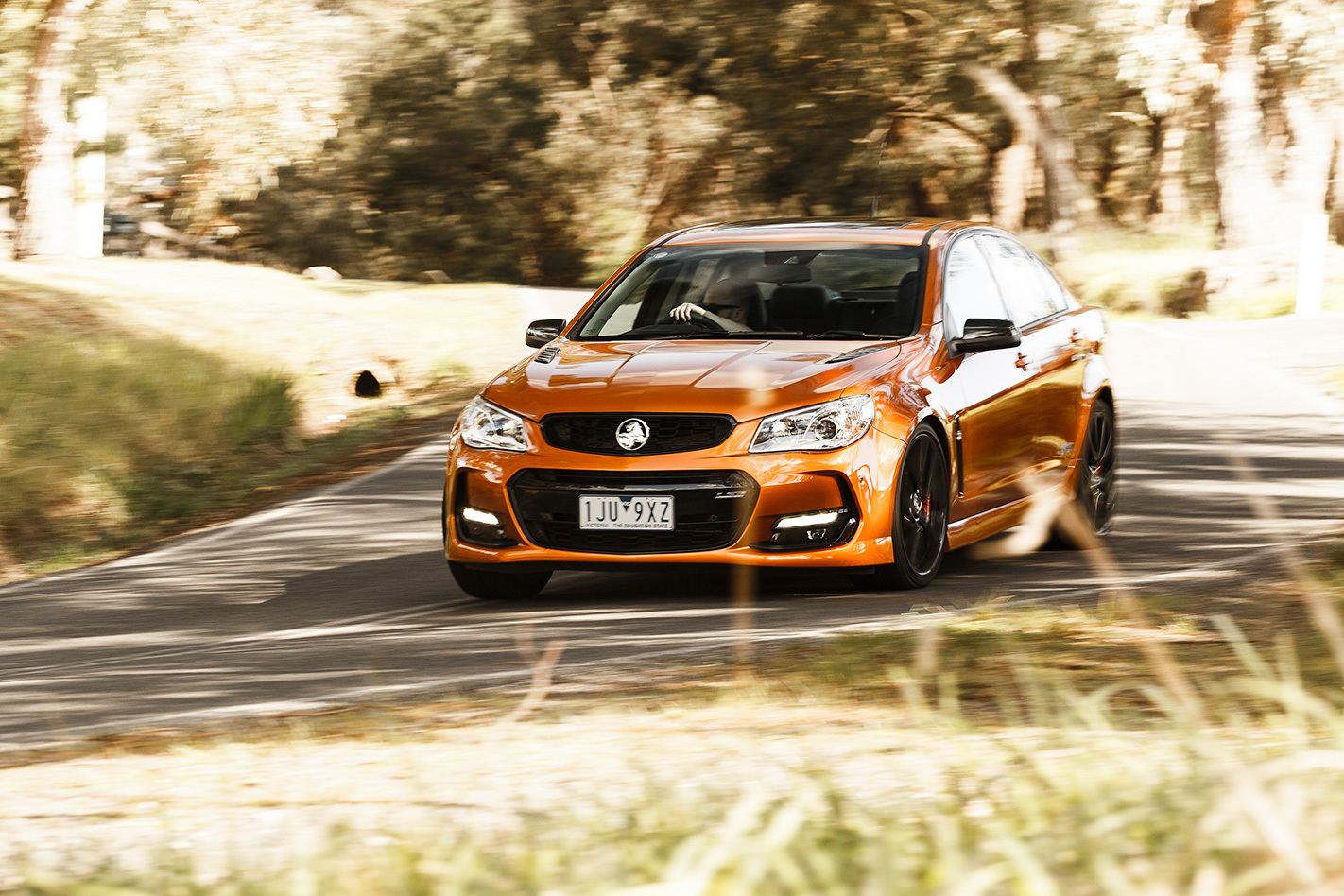
Which is all fine, but the reason we buy big, rear-drive cars is for their speed and handling – and the way that makes them feel – right? Exactly, so the dragstrip was our next stop. With two pots, almost two litres and 40 years of making it work under its belt, you might be tempted to think this’ll be a Commodore massacre.
Save your tears, because the Stinger rips off quarter miles that an HSV of a decade ago wouldn’t have been able to stay with. Those 3.3 litres, boosted by a pair of hair dryers crank out 272kW and 510Nm of torque. And even though that’s shy of the SS-V’s 304kW and 570Nm, thanks to the softer launch of the Kia, its fat, fat mid-range and eight forward ratios, it can stay with the Holden. Literally.
As in, door-to-door. Line them up together and the 330S gets to 100km/h in 4.92sec (5.04sec for the SS-V) and they’ll both go on to cover 400m in roughly 13.1sec. Even the terminal speeds were similar, with the Kia stretching out to an almost three km/h advantage.
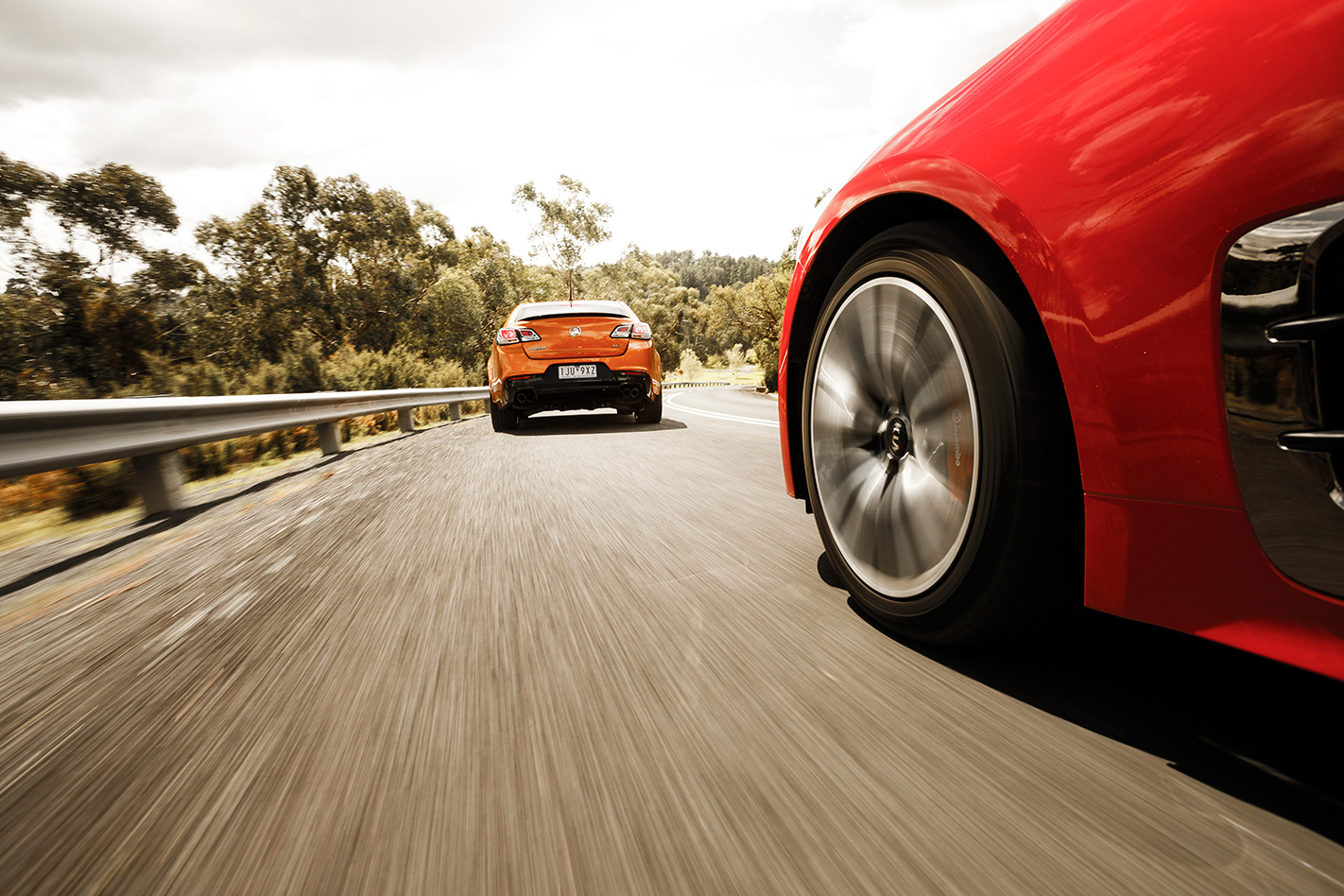
You also need to disable the ESP and traction and treat it to a small (about 1700rpm) stall-up to squeeze out that sort of number. You might imagine the Kia’s launch control helps, too. You’d be wrong. In fact, it’s a tad faster if you stall it up a tiny bit and then step on it hard than if you use the launch function.
2017 Kia Stinger GT vs 2016 Ford Falcon XR6T Sprint: New vs used
From what I can see, the Kia’s launch is, like the drive-mode-select thing, a waste of ones and zeroes. On the road, the differences in how each makes its grunt is even more pronounced. The Kia lacks the low-down shunt of the Commodore, nor does it have the top-end howl.
But it does have a mighty, boost-typical surge of rushy goodness in the mid-range. But as well as being short (relatively speaking) of a little snot at each extreme end of the tacho, it also lacks pretty much anything in the way of theatre.

The Kia also has a bit of a problem when you throw this pair into the first corner. That said, it’s not any inherent shortcoming in the Stinger’s abilities, rather than the VF Series II Commodore has one of – if not the – best, most tactile front ends in a big sedan made anywhere by anyone. But in isolation, the Kia is darn good.
It corners flat, rides better than the SS-V and generally shrugs off any attempt by a corner to tie it up in knots. No, it doesn’t have the surefooted feel of the SS-V, but like I said, nothing else really does. And the South Korean is putting a lot less rubber down at each corner, so the ultimate grip isn’t quite as stratospheric either.
That’s probably also the reason the Kia takes almost two metres farther to pull up from 100. The VF gets the nod for its superb damping, but the Stinger is not too far behind it on most surfaces. The one less-than-perfect chassis element of the Kia is its steering.
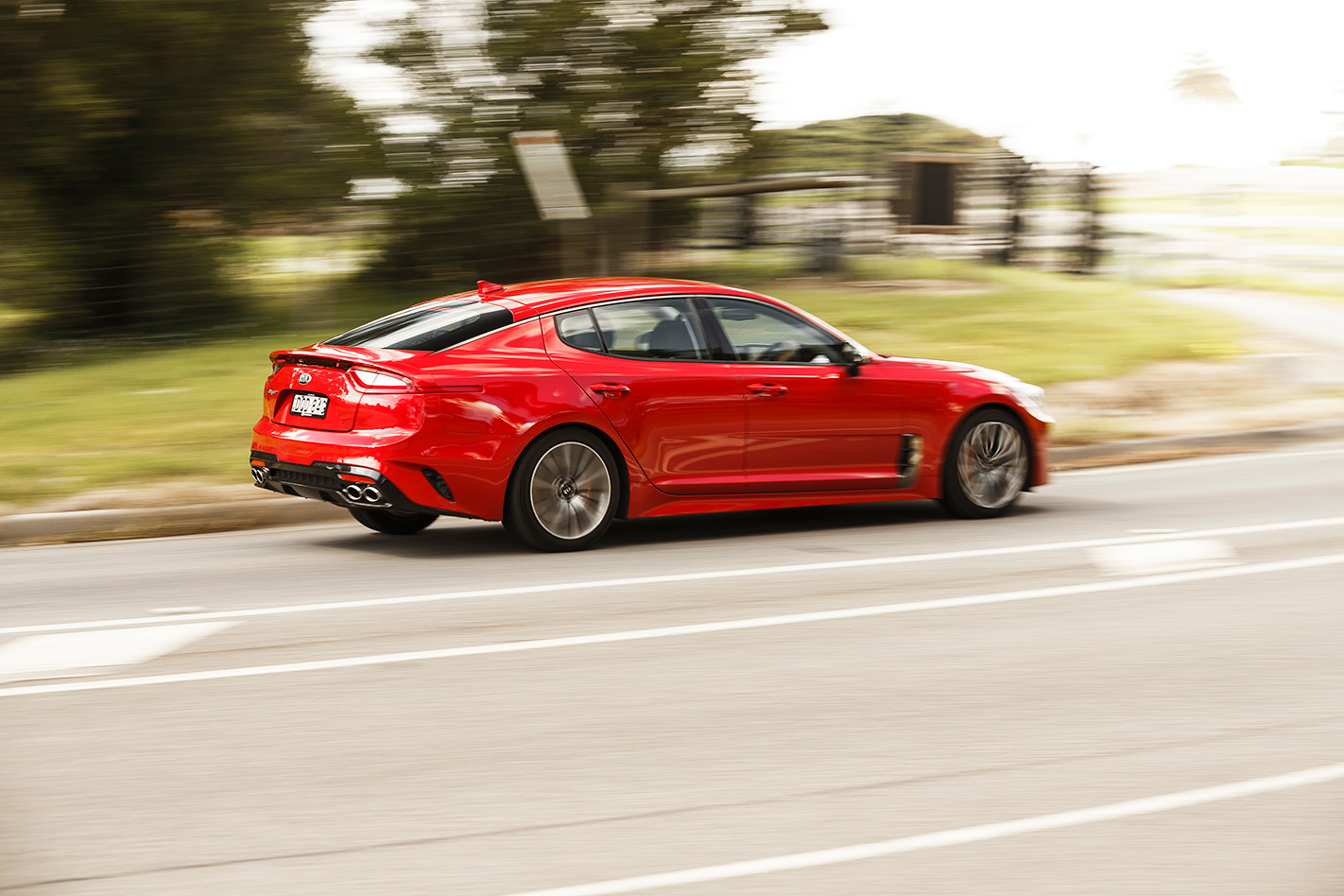
Beyond that, the Kia feels like it’s been set up with a lack of castor; it doesn’t feel like it wants to self-centre which is almost certainly about the assist motor’s calibration rather than the actual geometry. Nevertheless, as you apex, the corner opens and you ease your pressure on the wheel, suddenly nothing happens.
At which point, you’re playing catch-up by hurriedly winding off lock and chasing the thing back to the centre of the lane again. Okay, yes I’ve driven worse – a lot worse – but in what is such an otherwise capable platform, it’s a bit of a spoiler. The only time the SS-V Redline starts to feel a little leaden through the helm, meanwhile, is when you’re hard on the brakes.
And criticising a car for trying to keep itself stable when you throw out the anchors isn’t really something I’m about to start doing. The other aspect of the Stinger that deserves a bit of attention for the next model is the transmission. Yes, eight is the new six when it comes to ratio counts, but does the SS-V suffer for not having the extra cogs?
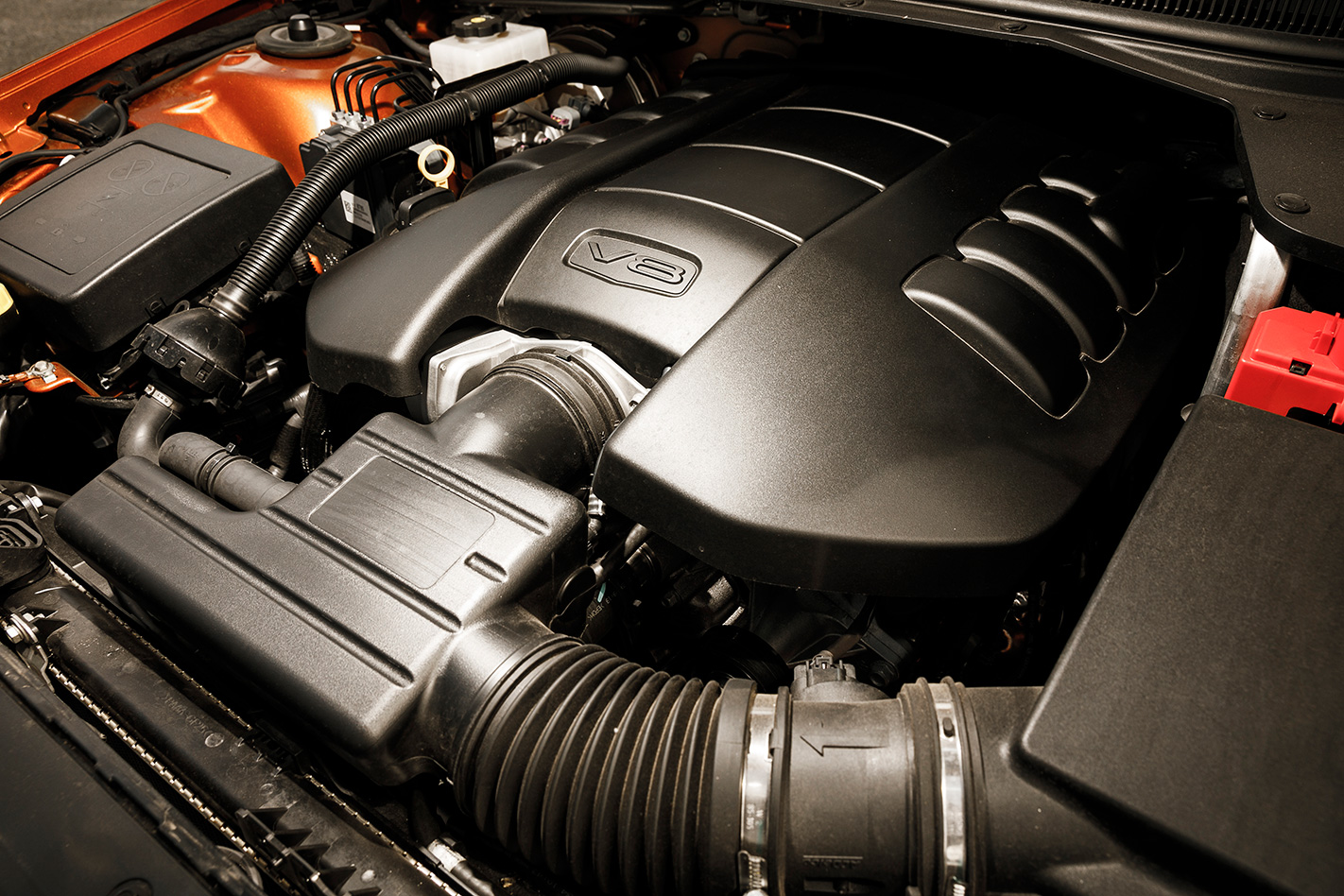
Not to mention relaxed. Winding, uphill corners will soon have the Kia kicking down what feels like one ratio too many and giving things a manic feel when it could easily hold the taller gear and make the most of that huge mid-range twist. It’s calibration, yes, but it’s also a bit inexplicable.
Shifts in the Stinger are deliberately kept soft, but we’ll live with that. The Kia also lacks a Sport mode for the transmission as well as a proper manual mode. Where the Holden will accept manual commands from the paddles and hold even the tallest gears regardless of your throttle position or road speed, the Kia thinks it knows better and will kick-down regardless of whether you’ve been using the paddles or not.
The SS-V will also stay in manual mode once you’ve flapped a paddle, while the Stinger counts to 10 and then switches you back to Drive mode without asking. The Kia also uses the in-vogue separate button for Park which is a trend I can only hope disappears soon.
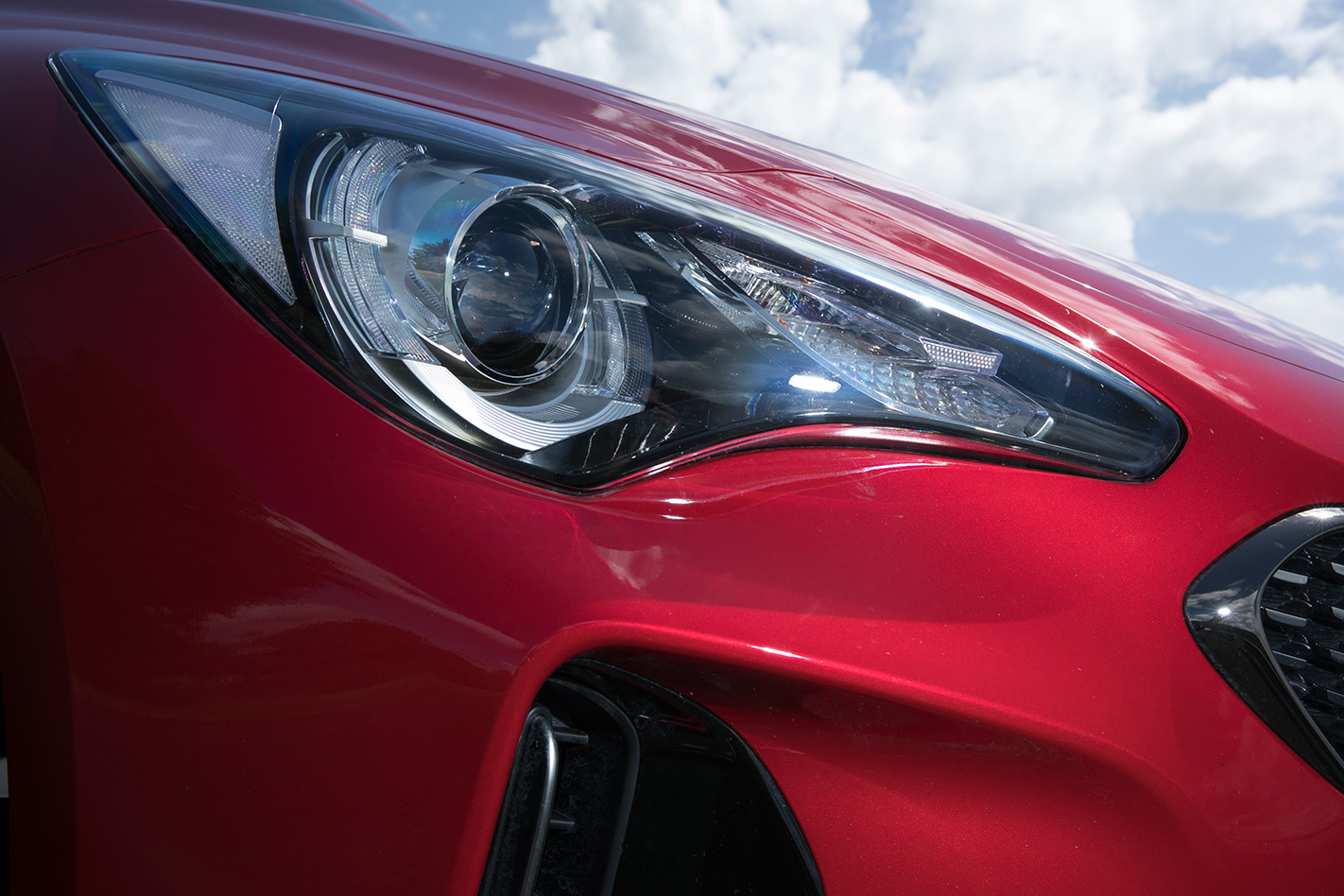
Hell, even under the bonnet, you can see that it’s a vee layout and the turbos are actually visible. Wonderful. The interior is up to snuff and the car’s best angle is probably that lovely profile. That said, it looks tough in the mirrors, too, with the headlights pushed way out to each corner and the vertical vents below those reminding me of a Ferrari 599.
It rides remarkably well and it’s empty-church quiet. It goes around corners, it’s good value for money and you get that brilliant seven-year/unlimited kays warranty. Which means you and I can buy them second-hand, coming out of user-chooser leases, and still have three or four years factory cover.
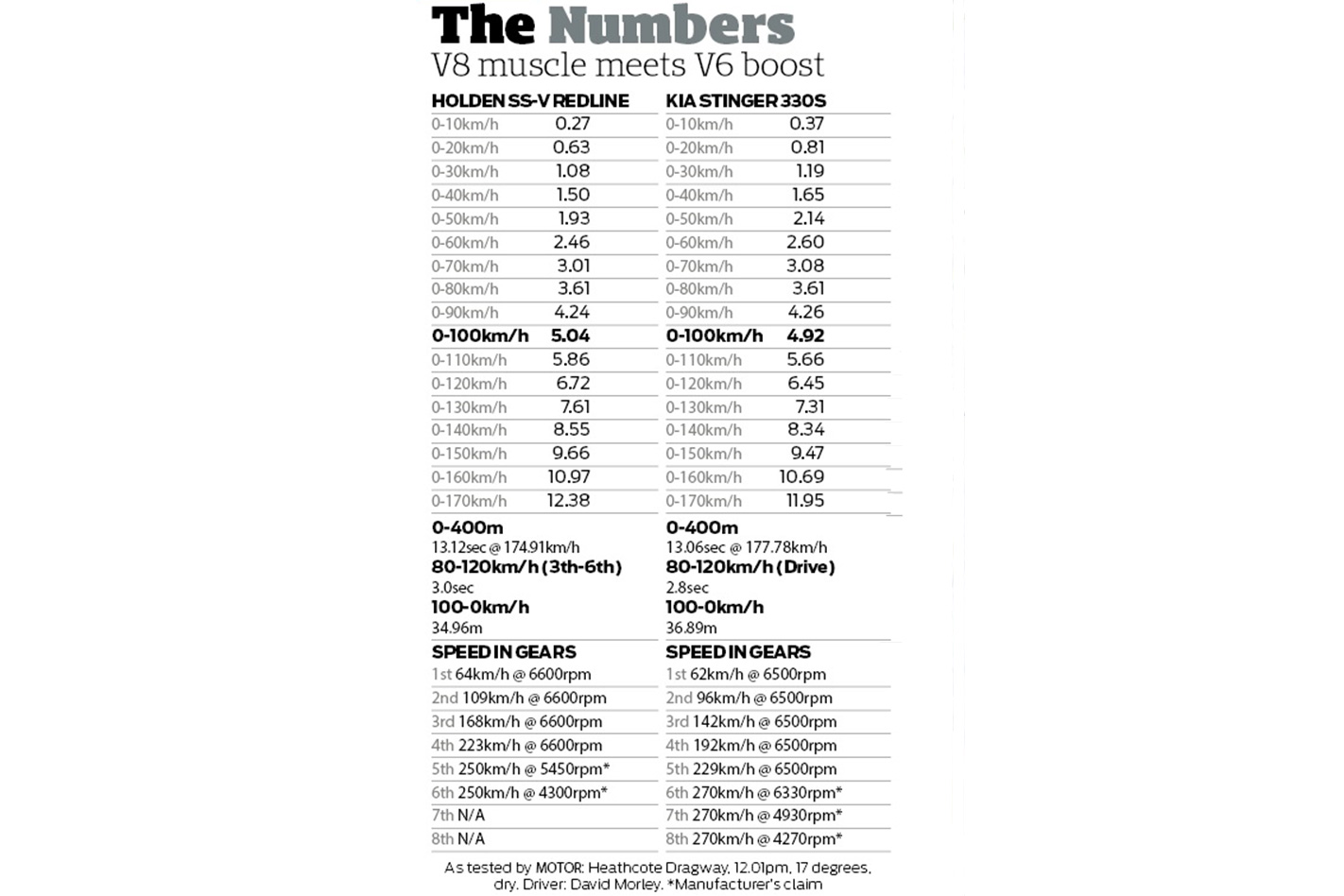
So, yeah, I’d say that the Kia is, without a doubt, worth a look and stands as probably the best reason yet for people like us to see some light at the end of the tunnel. Okay, so a Stinger is, philosophically, more of a replacement for a Calais or Ford Falcon G6E Turbo than an SS-V Redline or an XR6 Turbo, but that doesn’t ruin the illusion.
And here’s the bottom line: as a recidivist Falcon and Commodore owner over the years, I’d take a Kia Stinger as my next set of wheels and know that I’m not trading off anything that would otherwise be a deal breaker. No joke.
| u00a0 | 2017 Kia Stinger 330S specs | 2017 Holden SS-V Redline Commodore specs |
| Engine | 3342cc V6, DOHC, 24v, twin-turbo | 6162cc V8, OHV, 32v |
| Power | 272kW @ 6000rpm | 304kW @ 6000rpm |
| Torque | 510Nm @ 1300-4500rpm | 570Nm @ 2000rpm |
| Transmission | 8-speed automatic | 6-speed automatic |
| Weight | 1780kg | 1803kg |
| Price | $48,990 | $57,190 |
| Pros | Mid-range grunt; impressive dragstrip figures; handling; space; design | Seamingly endless grunt from LS3; sorted dynamics; V8 soundtrack |
| Cons | Steering needs work; doesnu2019t sound overly enticing; no manual mode | The last of the line u2013 the stay of execution is over for an Aussie icon |
| Star rating | 4 stars out of 5 | 4.5 stars out of 5 |

